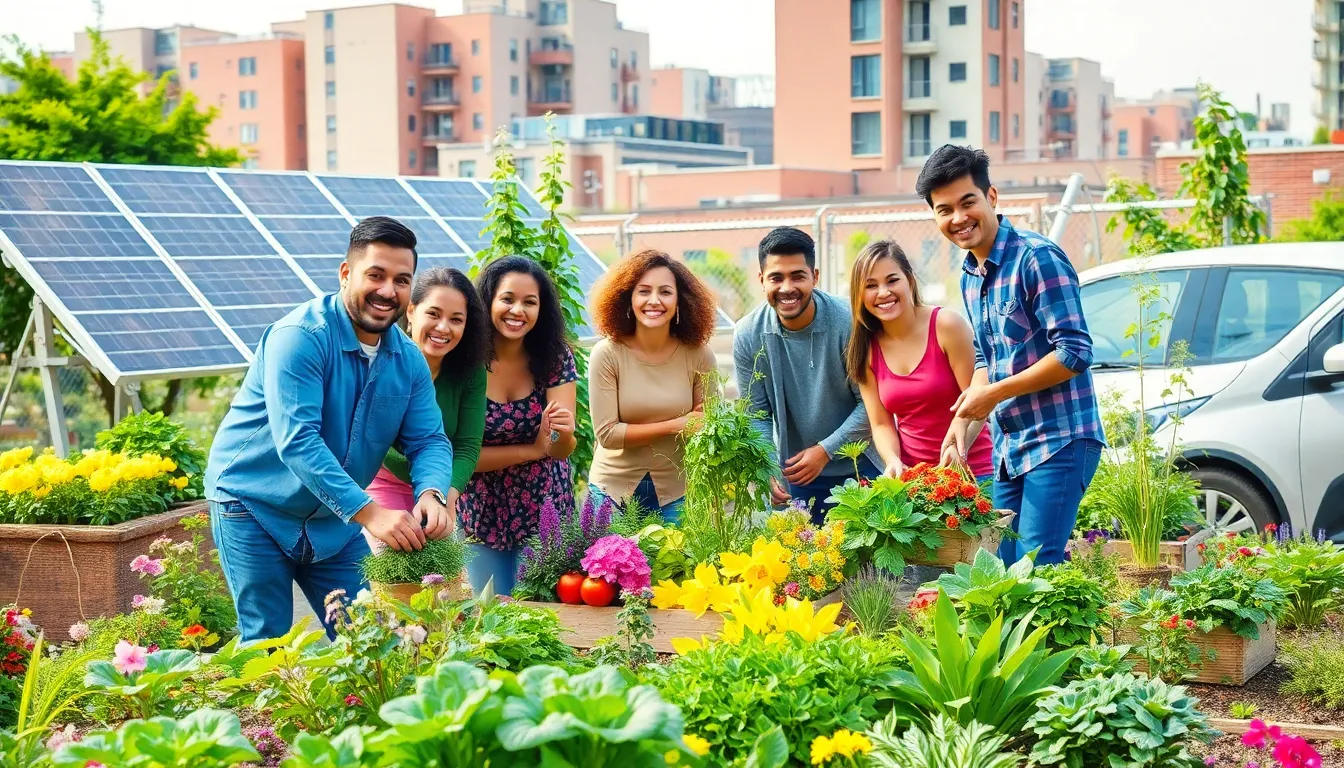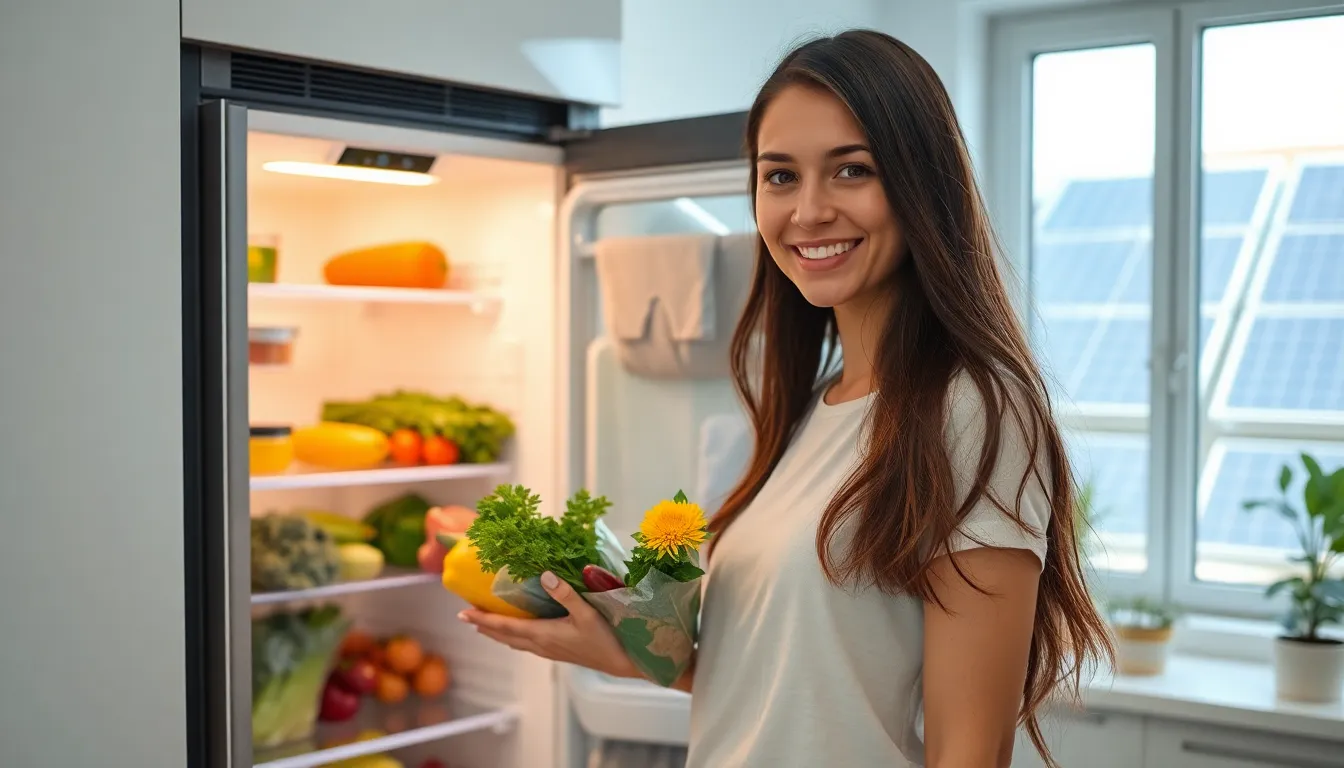In a world where eco-friendly choices often feel overwhelming, green smart living emerges as the superhero we didn’t know we needed. Imagine a lifestyle that not only saves the planet but also saves you money—talk about a win-win! This approach blends sustainability with modern technology, making it easier than ever to reduce your carbon footprint without sacrificing comfort or style.
Table of Contents
ToggleUnderstanding Green Smart Living
Green smart living integrates environmentally friendly practices with cutting-edge technology. This lifestyle fosters sustainability while enhancing convenience and efficiency. People engaged in green smart living utilize renewable energy sources such as solar and wind power. Energy-efficient appliances significantly reduce utility costs, thereby creating immediate financial benefits.
Innovative home automation systems contribute to smart living by allowing individuals to control energy usage remotely. For instance, smart thermostats learn user preferences and adjust heating or cooling accordingly, optimizing comfort while consuming less energy. Water-saving fixtures further decrease resource consumption without sacrificing performance.
Transportation plays a crucial role in this eco-conscious lifestyle. Electric vehicles become increasingly popular for their low emissions compared to traditional gas-powered cars. Car-sharing services and public transit options also reduce individual carbon footprints, promoting communal resources.
Food choices directly impact one’s ecological footprint as well. Families increasingly choose local and organic produce to minimize transportation emissions and support community farmers. Urban gardening and vertical farming practices ensure sustainable food sources are accessible without relying solely on commercial agricultural systems.
Educating oneself about sustainable practices is essential. Numerous resources are available online, from blogs to webinars, that provide insightful information on green living strategies. By staying informed, individuals can make better choices that contribute to a healthier planet.
Investing in green technologies often leads to long-term savings. Tax incentives and rebates for energy-efficient upgrades encourage homeowners to participate in this eco-friendly movement. Adopting green smart living principles invites a holistic approach to modern lifestyles, combining environmental responsibility with technological advancements.
Benefits of Green Smart Living

Green smart living promotes a range of benefits, enhancing both the planet and individual well-being. This lifestyle brings together sustainability and innovative technology for significant advantages.
Environmental Impact
Reducing carbon emissions stands out as a primary benefit of green smart living. Individuals utilizing renewable energy sources, like solar panels, directly decrease reliance on fossil fuels. Smart appliances consume less energy than traditional models, further preserving natural resources. Urban gardening practices help restore ecosystems while promoting biodiversity. Communities that embrace electric vehicles experience less air pollution, contributing to clearer skies and healthier habitats. Sustainable food choices support local economies and reduce the carbon footprint associated with transportation.
Health Benefits
Adopting green smart living enhances personal health alongside environmental well-being. Access to organic produce minimizes exposure to harmful pesticides, promoting better nutrition. Engaging in urban gardening encourages physical activity while fostering a connection to nature. Indoor air quality improves significantly when utilizing energy-efficient systems with proper ventilation. Natural lighting from strategically placed windows uplifts mood and reduces stress. Reduced exposure to pollutants directly benefits respiratory health, leading to an overall improved quality of life.
Economic Advantages
Cost savings emerge as a significant incentive for embracing green smart living. Switching to renewable energy sources typically results in lower utility bills, creating long-term financial relief. Tax incentives for energy-efficient home upgrades further boost financial gains. Investing in smart home technology often pays off through reduced energy consumption, leading to additional savings over time. Opting for local produce diminishes transportation costs, making meals both fresher and more affordable. Lastly, electric vehicles generally offer savings on fuel costs and maintenance, presenting a sound economic choice.
Key Principles of Green Smart Living
Green smart living revolves around incorporating sustainable practices into everyday life while utilizing modern technology. This lifestyle emphasizes essential principles that contribute to personal well-being and environmental protection.
Sustainability
Sustainability forms the backbone of green smart living. This principle encourages individuals to make eco-friendly choices that reduce resource depletion. Embracing renewable energy sources, such as solar and wind power, significantly lowers carbon emissions. Engaging with local organic agriculture supports environmentally responsible food production while fostering community resilience. Responsible waste management through recycling and composting further enhances sustainability efforts. Prioritizing products from companies committed to sustainable practices impacts both purchasing habits and the broader market landscape.
Energy Efficiency
Energy efficiency plays a crucial role in reducing environmental impact. Utilizing energy-efficient appliances conserves energy and decreases utility costs substantially. Smart thermostats, for instance, adjust heating and cooling based on real-time usage patterns. LED lighting consumes less power while maintaining brightness and longevity. Opting for energy-efficient window treatments reduces heat loss in cold months and minimizes cooling demands during warmer seasons. Individuals can also use energy monitoring systems to track consumption, making informed decisions to reduce waste.
Minimalism
Minimalism aligns closely with the principles of green smart living. By embracing a simpler lifestyle, individuals reduce excess consumption and waste generation. Thoughtful purchasing decisions lead to acquiring only necessary items, thus minimizing clutter. Prioritizing quality over quantity encourages investments in durable, sustainable products. Spaces designed with minimalism in mind promote efficiency and ease of maintenance. Ultimately, adopting minimalism enhances personal well-being by fostering a sense of peace and clarity in one’s living environment.
Practical Tips for Implementing Green Smart Living
Integrating green smart living involves practical changes at home and in daily routines. Adopting these strategies enhances sustainability and promotes a healthier lifestyle.
Home Improvements
Investing in energy-efficient appliances significantly reduces energy consumption. Choosing LED lighting over traditional bulbs lowers electricity usage. Adding insulation to walls and attics improves temperature regulation, minimizing heating and cooling costs. Implementing smart home systems, like smart thermostats, allows for optimized energy management. Incorporating solar panels enhances reliance on renewable energy. Utilizing rainwater harvesting systems supports sustainable water use. These home improvements foster an eco-friendly and cost-effective living environment.
Daily Habits
Practicing mindful consumption encourages individuals to choose quality over quantity. Utilizing reusable bags, bottles, and containers cuts down on single-use plastic waste. Composting kitchen scraps contributes to reducing landfill waste. Opting for plant-based meals reduces carbon footprints, benefiting health and environment. Carpooling or using public transportation conserves energy and lowers emissions. Monitoring energy usage through apps provides insights for efficient living. These daily habits nurture a commitment to sustainability and mindful consumerism.
Embracing green smart living transforms everyday choices into powerful actions for sustainability. By integrating technology with eco-friendly practices, individuals can significantly reduce their environmental impact while enjoying financial benefits.
This lifestyle not only enhances personal well-being but also fosters a healthier planet. With a focus on energy efficiency and mindful consumption, everyone can contribute to a more sustainable future.
The journey towards green smart living is accessible and rewarding, encouraging communities to thrive in harmony with nature. Adopting these principles paves the way for a brighter and more sustainable tomorrow.



